What Sourdough Is, and How to Make It
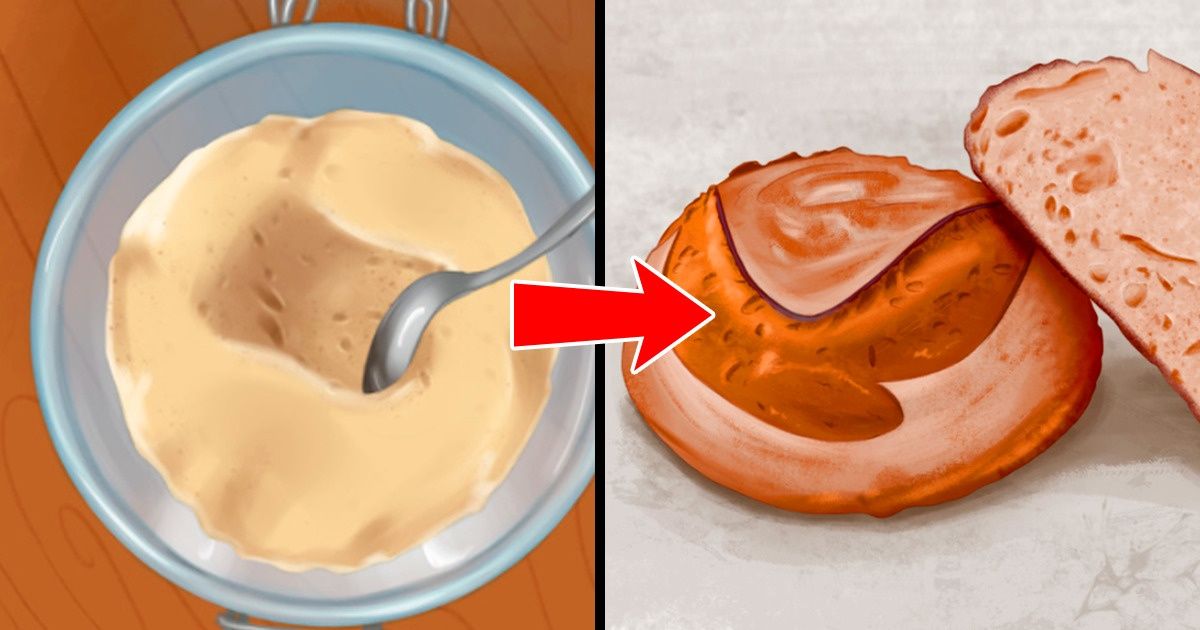
Sourdough is widely used to make bread and other types of dishes, such as pizza. It’s unique in that it doesn’t need any yeast to be added while being made, unlike traditional dough.
5-Minute Crafts wants to show you how to prepare this bread in 5 days. However, you must keep in mind that this process will require patience and perseverance. Although it may take a few days to prepare, you’ll obtain a starter that you’ll be able to keep using for a long time if it’s properly preserved.
What sourdough is
Sourdough is a starter obtained by mixing cereal flour, such as wheat or rye, and water. The presence of natural yeasts in this type of flour is the compound that will be responsible for the fermentation of the dough. The reason we call it “sourdough” is because of the flavor that the starter gives to the bread: it’s slightly sour and tingly. Sourdough is one of the oldest techniques in bread making.
There is evidence that suggests that bread made with this type of dough is more nutritious than traditional bread since it contains a greater amount of antioxidants and is easier to digest.
What you’ll need
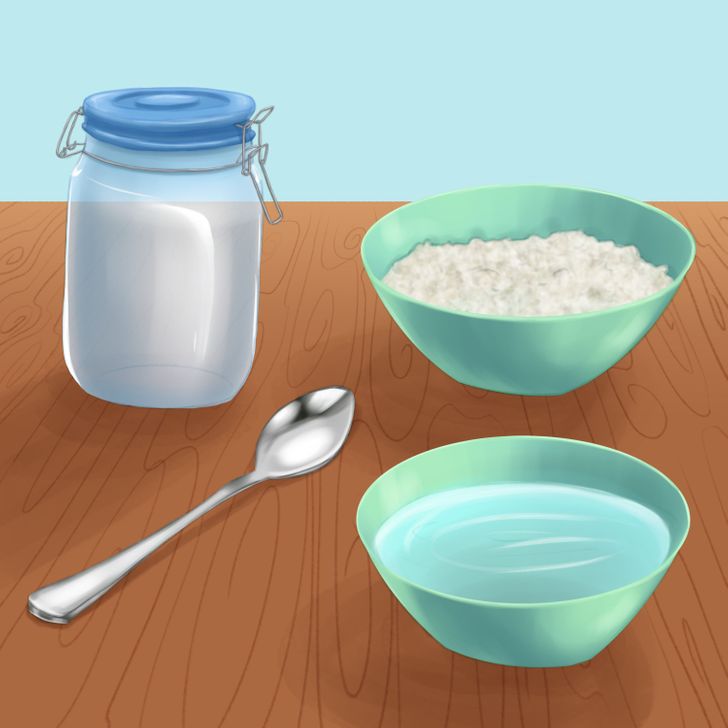
- 1 13.5-ounce (300 ml) jar or bigger (clean and dry)
- 120 g of wheat flour (strong or all-purpose work just as well)
- 4 ounces (120 ml) of warm water
Day 1
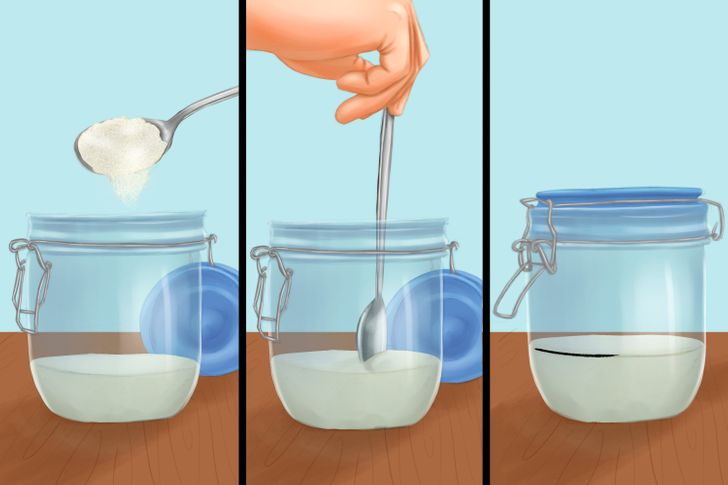
- Pour 3 ½ tablespoons of warm water into the jar and add 3 tablespoons of flour. It’s more or less the equivalent of 30 ml and 30 g respectively. Stir until you get a homogeneous, elastic, lump-free mixture.
- Cover it and let it sit in a warm, dry place. You could, for example, use your oven or microwave as a storage place, just make sure you don’t turn them on, of course. If you live in a very cold place, it’s recommended to cover the jar with a cloth to preserve the inner heat a bit more.
- We advise that you use a glass jar, as this will make it easier to keep track of the evolution of your sourdough. If your jar doesn’t have a lid, you can use an elastic band and plastic wrap to seal it. You can also make small lines with a marker to indicate the growth of your sourdough.
Day 2
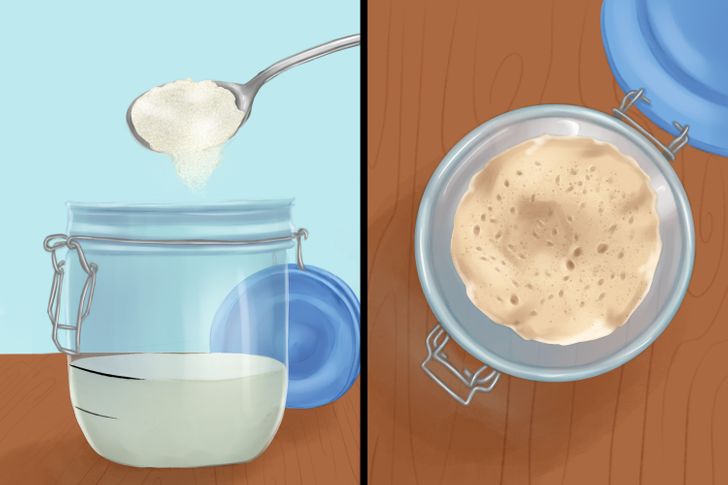
- Add 30 g of flour and 2 tablespoons of warm water to the dough and stir. This process is called feeding the dough. After that, store it in the same place.
- On this day, you’ll probably see some bubbles appear on the surface, and the dough will probably have already increased in volume. If the former does not happen, make sure you’re using the right flour and that the water is warm.
Day 3
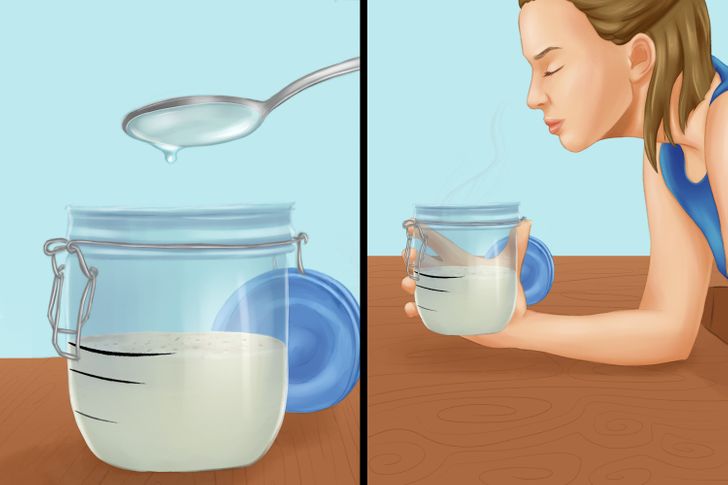
- Add another 2 tablespoons of warm water and 30 g of flour. Stir after feeding the dough and return the jar to its usual place.
- While you may not see much of a difference in the number of bubbles or any changes in the volume of the dough compared to the day before, you will begin to notice that it does smell slightly acidic, sour, and vinegary. That’s normal.
Day 4
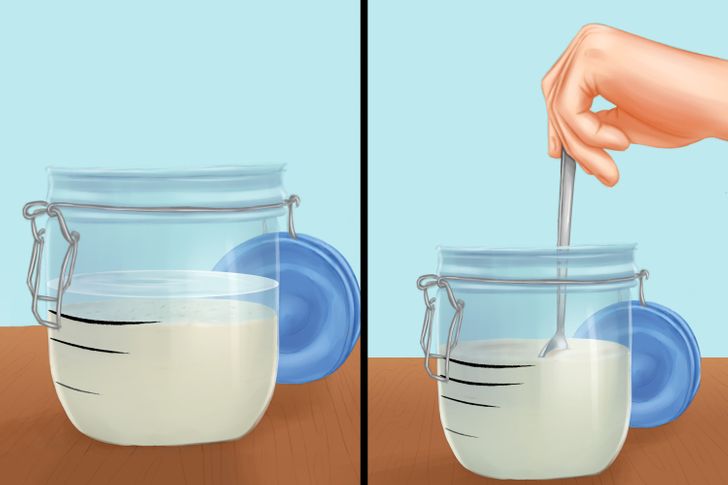
- Add another 30 g of flour and 2 tablespoons of warm water and stir until everything is completely integrated. Then set it aside as you’ve done before.
- There may be no significant difference in appearance and aroma compared to the day before. It’s also likely that there will be a slight excess of liquid accumulated on the surface of the dough due to fermentation. If this occurs, you just have to mix the dough very well and add less water next time. It means you’ve been feeding the dough too much water.
Day 5
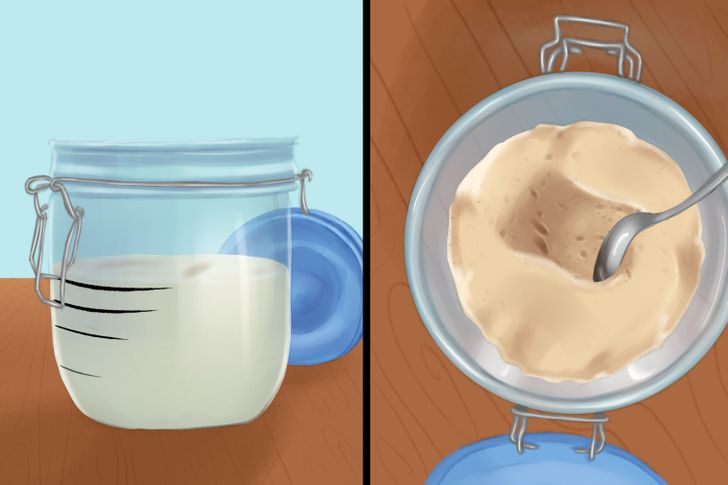
- Normally, around this time, you should be able to see that your sourdough has increased in volume and that there are more bubbles not only on top but also in the dough itself. When both of these conditions are met, your sourdough will be ready to be used.
- Note that the bubbles may not be noticeable on the surface, but you will be able to see them when you move the dough with a spoon, for example.
- As of today, you can keep your sourdough in the refrigerator. However, you have to keep in mind that sourdough is “alive,” so you have to feed it every 15 to 20 days, as long as you’re not using it to make more bread. And if you do use some of that sourdough, you will have to replace the amount you used by mixing just as much flour and warm water back to the jar.
Things you should take into account
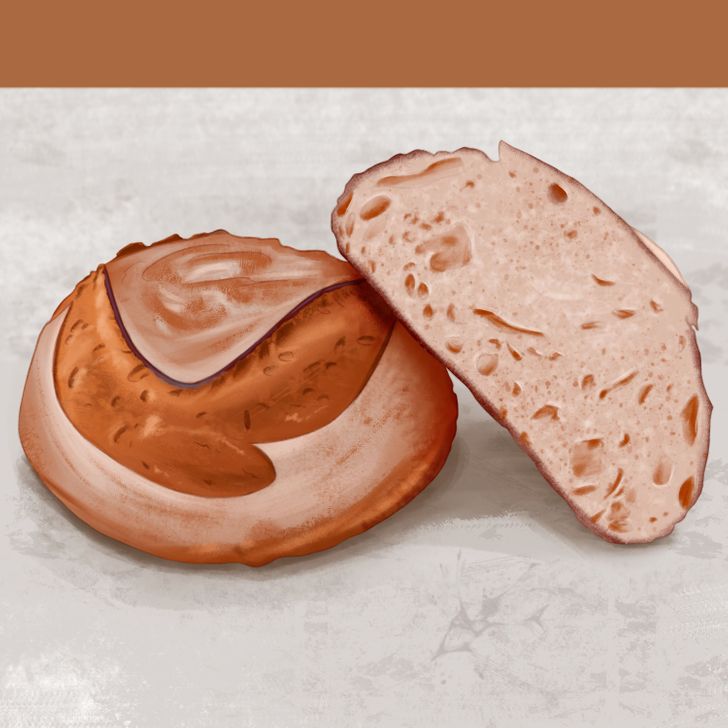
-
Bread made with sourdough will have a more acidic flavor than the bread you buy at the supermarket. That’s because sugar is a common additive in commercial bread, and the sourdough also contains lactobacilli that make the dough rise. It will also have a spongier consistency and a thick, crispy crust.
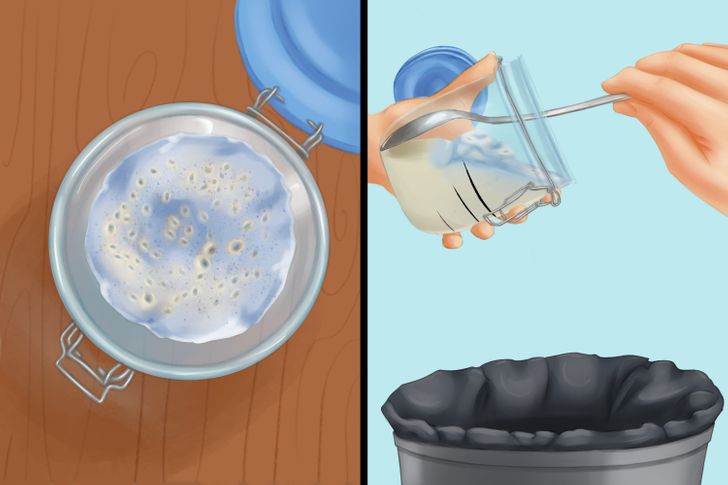
- If the dough turns greenish or bluish, the jar may not have been completely clean in the first place. If this happens, you have no other choice but to discard the dough and start all over.
- Your sourdough may require a different amount of time to be ready for use — our timetable is just a suggestion. This is because you might be using a different type of flour, different environmental conditions, water at a different temperature, etc. Keep in mind that preparing it may require time and patience and the need to start over.
- As the days go by, your dough will become more mature and sour, which will give your baked goods a different flavor and aroma.
- The amount of sourdough you should use when preparing bread or pizzas will depend on the type of recipe you’re working with. In some cases, you should hydrate it by adding water and flour in equal parts, for example.